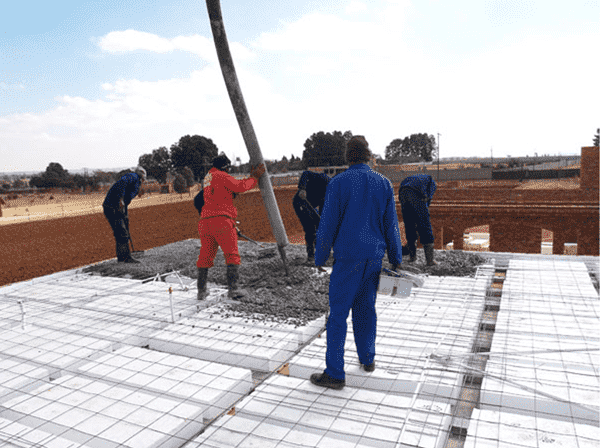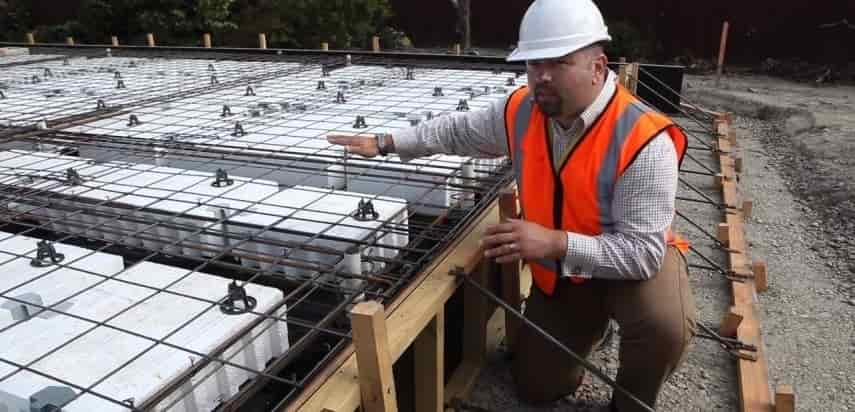What are the uses of polystyrene in the building? This material is made of plastic and is in the category of chemicals and is available in white. Its most important feature is its insulation. Polystyrene is mostly used in the construction industry to insulate structures. This is considered one of the most popular materials for insulating buildings and can be used inside and outside the building.
Reasons for using polystyrene in buildings
Most uses of polystyrene are in buildings; Because these materials, in addition to being an excellent thermal insulator, have a lightweight and high durability. This material is used in the construction industry in the form of blocks and is also known as one of the cheap materials. Polystyrene panels are often made in different sizes, and the minimum thickness for them starts from one inch.
Polystyrene panels are used on the roofs of buildings because they are highly resistant to moisture. These materials are available in the form of ordinary, refractory, and compact blocks, and mixed. There are different types of polystyrene, which we will introduce in the following.
What are the types of polystyrene?
Following the use of polystyrene in the building, we intend to introduce different types to better understand their performance.
GPPS or General purpose polystyrene:
This type of polystyrene is usually used for normal purposes. GPPS polystyrene from polystyrene has extraordinary properties such as strength and high impact resistance. High impact resistance makes them act as good fluids during the impact process.
This model of polystyrene is usually used for electrical applications due to its compatibility with electrical capabilities and high durability. In Iranian markets, this type is known as crystal polystyrene.

Types of polystyrene
HIPS polystyrene:
HIPS polystyrene is made of polystyrene, which is not used in construction.
EPS Polystyrene:
Another example of the use of polystyrene in buildings is the use of its expansion type, known as EPS. This model of polystyrene is a white polymer that has refractory properties. This type of polystyrene is known in the world as ionolite.
The use of EPS polystyrene in buildings is usually related to the construction of canopies and sandwich panels, and more than other examples, it is considered by manufacturers of prefabricated panels.
Uses of polystyrene and their benefits
- These products have high recyclability.
- Fungi can’t grow and cause mold in them.
- Stability is one of the characteristics of these materials.
- You can use polystyrene as a high-quality sound and heat insulator.
- Resistance to moisture and water, which is the most important factor in the growth of bacteria and their destruction.
- The use of polystyrene reduces dead loads in the building to a great extent.
- The reduction of waste and rubbish produced in buildings is great.
- The use of polystyrene in the building reduces concrete consumption by 30%.
Uses of polystyrene and their disadvantages
Of course, every building material, in addition to its advantages, also has disadvantages, which are as follows in the case of polystyrene:
- Exposure to sunlight can damage and discolor polystyrene.
- Polystyrenes react with industrial solvents, which can damage them.
- If the polystyrene is at a temperature of 120 to 125 degrees Celsius, it will melt.
- Polystyrenes are highly flammable.
- Polystyrenes produce toxic fumes and gases during very dangerous fires.
- These materials continue to burn in places with low oxygen levels.
Learn more about polystyrene
These materials are made of a type of synthetic polymer that is formed by styrene monomer units. Styrene monomer is a chemical that, if we want to introduce it more accurately, is an oily substance. The uses of polystyrene are very diverse in different industries.
These insulators have a closed cellular structure and are supplied in the form of solid and hard foams, which are made of a material called styrene, which forms the cellular structure, and pentane, which is used in the form of foam and blower. These materials are composed of hydrocarbon compounds and are derived from natural gas and oil derivatives.

